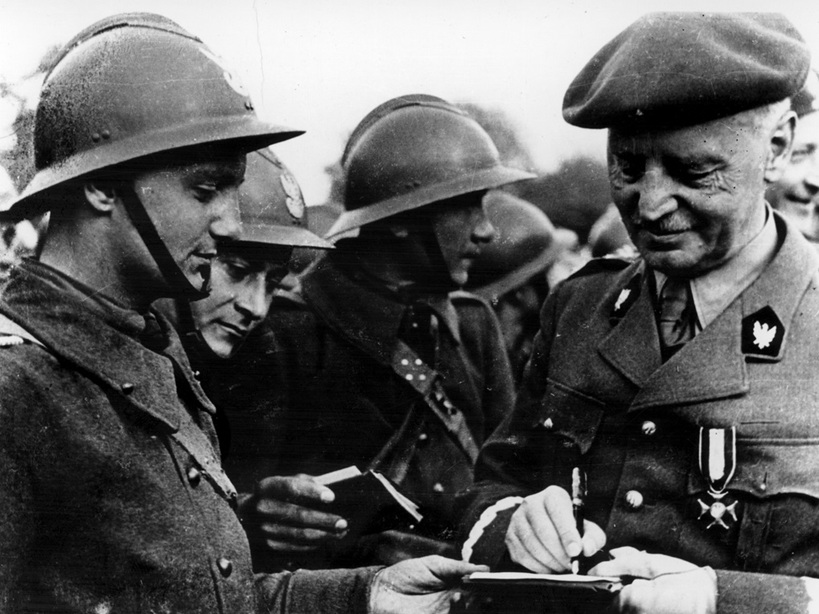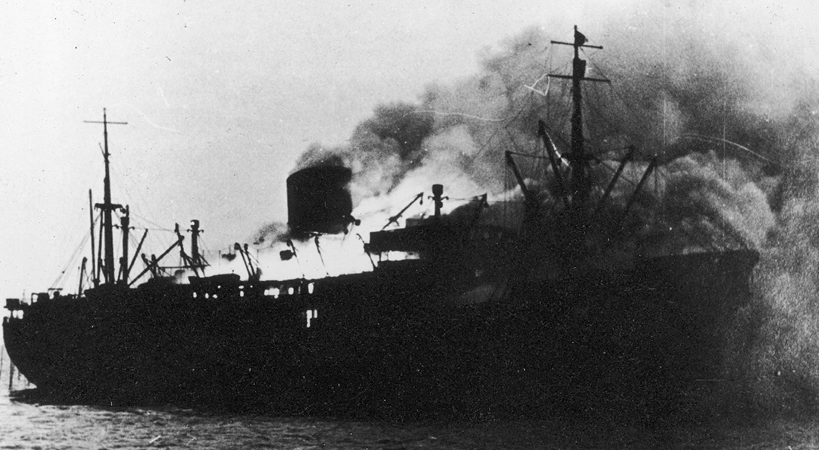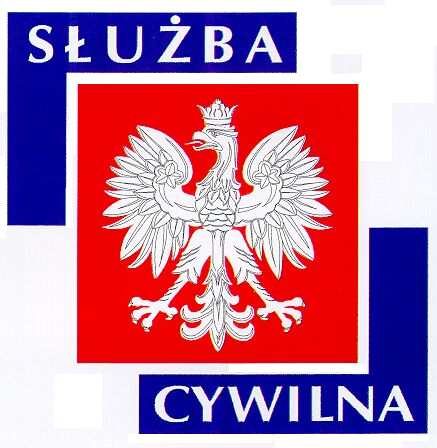As a result of the invasion of Germany and the Soviet Union Poland lost its independence in 1939. However, the Poles did not reconcile themselves to the loss of freedom and began forming new military units in allied France. Operations also continued with ships and vessels that found a haven in Britain.
After the fall of Poland, the British and French anticipated the possibility of German aggression against Norway. They paid particular attention to the port of Narvik, through which iron ore could be transported from the Swedish mines in Kiruna. The Allies began minesweeping and patrolling Norwegian waters. During one such patrol, on April 8, 1940, the Polish submarine ORP “Orzeł”, (Eagle), sank the ship “Rio de Janeiro” carrying German soldiers to Norway. This was a clear signal that the Germans had begun another aggression.
Intervention on a larger scale began with attacks by a British naval squadron on German transports heading to Norway. Thanks to the control of the waters gained between April 10 and 13, it was possible to carry out an Allied landing in the Narvik area, where troops of the Norwegian infantry division were still defending themselves.

Sikorski giving autographs to Podhale riflemen before the soldiers’ deployment to Norway, Fot. IPN
The naval-landing operation was carried out by a strong squadron, which included the Polish destroyers ORP "Blyskawica" (Lightning), ORP "Burza" (Storm) and ORP "Grom" (Thunder), as well as the passenger ships MS "Chrobry", MS "Sobieski" and MS "Batory".
The Polish destroyers escorted convoys, patrolled the waters in the Narvik area, shelled enemy positions on the coast and repelled Luftwaffe attacks from April 23. During the fighting, the “Lightning” shot down two planes, but on May 2. it suffered damage as a result of an exchange of fire with German artillery. On May 4. the bombed “Thunder” sank, and on May 15. the transport ship “Chrobry” sank as well. In early June, the ORP “Eagle” did not return from its patrol - its fate remains a historical mystery to this day. These were exceptionally heavy losses for the small Polish navy.
The land expeditionary corps headed for Norway included the British Guards Brigade, French troops of the Foreign Legion and Alpine Riflemen, as well as the Polish Independent Highland Rifle Brigade, which numbered nearly five thousand soldiers. Its troops accounted for one-third of the Allied forces, which were sent.
On May 8., soldiers of the Highland Brigade landed in the port of Harstad on the island of Hinnøya. Four days later, together with French and Norwegian troops, they took part in a successful attack on Gratangen-Bjervik. Further Allied successes enabled the Poles to man positions on the Øyord and Ankenes peninsulas. In the following weeks, they identified enemy positions and prepared for the Battle of Narvik.

Burning MS "Chrobry" near Narvik, Fot. NAC
On the night of May 27-28, British warships began artillery shelling of German positions in the Ankenes and Narvik area. After that, Polish gunners struck the towns of Ankenes, Nyborg and Beisfjord, enabling French and Norwegian troops to capture Narvik. The next day, after heavy fighting, they seized the towns and, continuing the assault, together with the allies, pushed the Germans back to the border with Sweden.
The dramatic situation of France, which was fighting the Germans, caused the expeditionary corps troops to leave Norway. The evacuation of the Polish Brigade ended on June 8.
During the Norwegian campaign 530 Polish soldiers and sailors were killed or wounded. The fallen rested in municipal cemeteries in Narvik and Håkvik.
King Haakon VII of Norway honored Polish participants in the 1940 campaign with a shoulder cord in Norwegian colors with gold hardware with the Kingdom's coat of arms. In 1979, a Polish-founded monument to the sailors of ORP “Thunder” was unveiled in Narvik.
The destroyer ORP “Lightning” has been preserved to current days. Today it serves as an exhibit of the Naval Museum in Gdynia. The wrecks of the destroyer ORP “Thunder” and the carrier MS ‘Chrobry’ were located- the first one in 1986 and the latter in 2000. Despite years of searching, the missing ORP “Eagle” has not yet been found.




